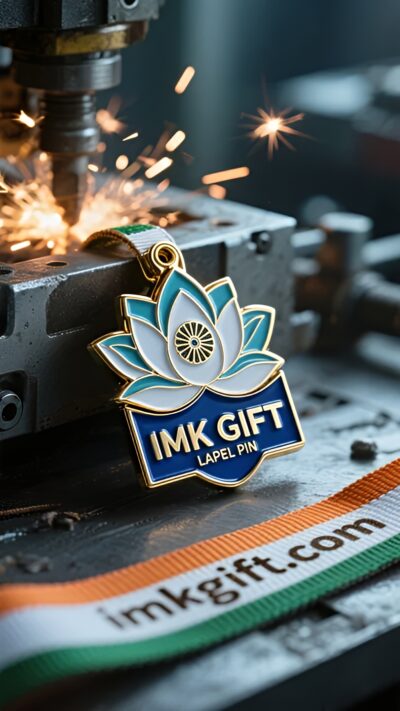in992-कमल-क-स-म-न-क-ट-ग-भ-रत-य-आत-म-एक-ल-ब-य-त-र-पर-ख-ल-रह-ह
▼
हर 15 अगस्त को जब दिल्ली के लाल किले में नारंगी, सफेद और हरे रंग का तिरंगा ध्वज लगाया जाता है तो हर भारतीय के पास अपने सामान में एक अलग सांस्कृतिक संहिता होती है। राष्ट्रीय ध्वज का गहरा नीला चक्र अविराम प्रगति का प्रतीक है जबकि लोगों के मध्य में कमल की आकृति के धातु के बर्तनों का प्रयोग अधिक कोमल आध्यात्मिक विरासत से होता है.
24 पंखुरों के कमल के आधार पर बनाया गया यह साधा टैग ऋग्वेद में भारतीय झण्डे में छिपी हुई सभ्यता संहिता के साथ मेल खाता है, यह कमल ब्रह्मांड के जन्म का मूल स्वरूप है। ये देवता अपने बोरों पर इस प्रकार के प्रतीक हैं, जो न केवल स्थिति का द्योतक हैं बल्कि इस भावना के प्रति भी वचनबद्धता दर्शाते हैं कि ‘माल से दूर रहना’ है। Just as when Mahatma Gandhi traveled around the country wearing cloths, there was always a copper lotus badge pinned on his lapel to remind himself to hold on to the pure belief in the colonial haze.
बैंगलोर के उद्यमकर्ता पार्क में, युवा इंजीनियर प्रणव की नोटबुक का उसके पिता द्वारा कमल के सामान से बना टैग हमेशा रहता है. This copper sign, which has accompanied three generations of the family to travel across five continents, has a mottled surface formed by oxidation, just like the brick walls of temples along the banks of the Ganges that have endured wind and rain. तकनीकी कठिनाइयों का सामना करते समय वे अतीत को याद करते हैं जबकि उनके दादा इस भक़्ति के साथ ‘भारत छोड़ो’ आंदोलन में भाग लेते
कश्मीर से कन्याकुमारी तक ऐसे अनगिनत कमल के मस्से नये युग की यात्रा में झटक रहे हैं। They, together with the fluttering national flag, tell the story that the true Indian spirit should not only have the ever-moving progress like a wheel of law, but also take root in the thick soil of civilization like a lotus. जब भूमंडलीकरण का ज्वार सभी के सामान पर भस्म होता है, प्राचीन सभ्यता का यह स्मारक अत्यंत बहुमूल्य है।
Every August 15th, when the orange, white and green tricolor flag is raised at the Red Fort in Delhi, every Indian has a unique cultural code hidden in their luggage. The deep blue wheel on the national flag symbolizes ceaseless progress, while the popular lotus-shaped metal luggage tags among the people carry a more delicate spiritual inheritance.
This luggage tag, modeled after a 24-petal lotus, coincides with the hidden civilization code in the Indian flag – in the Rigveda, the lotus represents the original form of the universe’s birth. Travellers attach such logos to their bags, which is not only a mark of status but also a commitment to the spirit of “remaining untainted by the mire”. Just as when Mahatma Gandhi traveled around the country wearing cloths, there was always a copper lotus badge pinned on his lapel to remind himself to hold on to the pure belief in the colonial haze.
In the entrepreneurial park of Bangalore, the notebook of the young engineer Pranav always has a lotus luggage tag given by his father. This copper sign, which has accompanied three generations of the family to travel across five continents, has a mottled surface formed by oxidation, just like the brick walls of temples along the banks of the Ganges that have endured wind and rain. Whenever encountering technical bottlenecks, he would recall the past when his grandfather participated in the “Leave India” movement with this logo – true progress does not lie in the distance moved, but in the determination to hold fast to the original intention.
From Kashmir to Kanyakumari, countless such lotus luggage tags are jingling on the journey of the new era. They, together with the fluttering national flag, tell the story that the true Indian spirit should not only have the ever-moving progress like a wheel of law, but also take root in the thick soil of civilization like a lotus. As the tide of globalization washes over everyone’s luggage, this reminder from an ancient civilization is precisely the most precious pass.
每年8月15日,当橙白绿三色旗在德里红堡升起时,每一个印度人的行囊里都藏着独特的文化密码。国旗上的深蓝色法轮象征永不停歇的前进,而民间流行的莲花造型金属行李牌,则承载着更细腻的精神传承。
这种以24瓣莲花为原型的行李牌,暗合印度国旗中隐藏的文明密码——在《梨俱吠陀》中,莲花代表着宇宙诞生的原初形态。旅行者将这样的标识系在箱包上,不仅是身份标记,更是对”出淤泥而不染”精神的承诺。正如圣雄甘地穿着土布周游全国时,衣襟上总别着铜制莲花徽章,提醒自己在殖民阴霾中坚守纯净信念。
在班加罗尔的创业园区,年轻工程师普拉纳夫的笔记本总挂着父亲赠送的莲花行李牌。这个曾随家族三代人辗转五大洲的铜制标识,表面氧化形成的斑驳,恰似恒河岸边历经风雨的神庙砖墙。每当遇到技术瓶颈,他都会想起祖父带着这个标识参加”退出印度”运动的往事——真正的进步不在于移动的距离,而在于坚守初心的定力。
从克什米尔到坎亚库马瑞,无数这样的莲花行李牌正在新时代的征途上叮当作响。它们与飘扬的国旗共同诉说着:真正的印度精神,既要有法轮般永动的进取,也要如莲花般扎根文明的厚土。当全球化浪潮冲刷着每个人的行囊,这份来自古老文明的叮咛,恰是最珍贵的通关文牒。
▼
Contact Us
📞 Tel: +0086-760-85286839
📧 Email: sales3@imkgift.com








